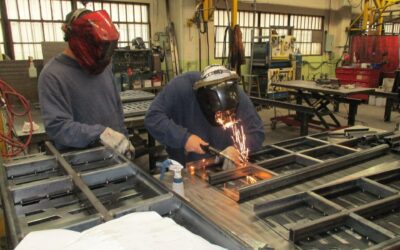 The seafood industry, especially compared to others, is often overlooked when it comes to its reputation for enhancements in technology and developing new products or processes. However, the seafood industry is no stranger to innovation.
The seafood industry, especially compared to others, is often overlooked when it comes to its reputation for enhancements in technology and developing new products or processes. However, the seafood industry is no stranger to innovation.
Due to this misperception, companies that have invested time and energy keeping the seafood industry modernized often leave lucrative tax credits on the table. Additionally, credits may be available related to many investments made to ensure food safety during these unprecedented times. One of the biggest missed opportunities is the R&D tax credit—a significant incentive available to companies that develop new products, processes, formulas, inventions, software, or techniques.
But first, what is the R&D tax credit?
The R&D tax credit is a dollar-for-dollar tax savings that directly reduces a company’s tax liability. There’s no limitation on the amount of expenses and credit that can be claimed each year. If the R&D credit can’t be used immediately or completely, any unused credit can be carried forward for up to 20 years.
In addition, previously filed tax returns can typically be amended for up to three years to claim the R&D credit retrospectively, providing an avenue to recoup previously paid taxes.
New or small business may be eligible to apply the R&D tax credit against their payroll tax for up to five years starting in 2016. The R&D credit is available both at the federal and state level, with approximately 40 states offering an R&D credit to offset state tax liability.
To help break down this complex topic, here’s a list of common questions seafood companies have about the R&D credit.
How much can a company in the seafood industry save with R&D tax credits?
There’s no limit to how much a company can claim for the R&D credit. However, there are several factors that can impact tax savings. The amount of tax credit available depends on how many qualified costs a company incurs during a specific tax year. See below for details on qualified costs.
In general, a company has the ability to save 7%–10% of annual R&D costs for federal purposes. The savings could be even greater if that company has an income tax filing obligation in a state that also offers an R&D credit.
Many business owners or management of seafood companies think, ‘Well, we aren’t a technology company, so what are we doing that could qualify as R&D?’ There are in fact several different areas in the seafood industry that can qualify for this tax credit.
Activities such as fish food processing and packaging, specialized boat builders and designers, and specialty equipment developers likely qualify for the R&D tax credit, even though it could seem they wouldn’t qualify.
Some recent examples of successfully claimed credits include:
- Seafood harvester and processor with $100 million in revenue generating a $4 million credit
- Specialty equipment developer with $35 million in annual revenue generating a $850,000 credit
- Seafood processor with $29 million in annual revenue generating a $335,000 credit
- Boat builder with $10 million in annual revenue generating a $100,000-plus credit
What does the R&D credit apply to?
This often underutilized opportunity could offer significant tax savings by reducing a company’s income tax burden. Those that participate in qualifying activities could include certain expenses directly connected to qualified research.
Qualified Cost Examples
- Taxable wages paid to employees for performing qualified R&D activities, including directly conducting R&D, first line managers, and personnel who directly support R&D projects and efforts. Qualified departments typically include product development, design engineering, technicians, project management, quality assurance, and process engineering
- Supplies and raw materials consumed or destroyed during the conduct of qualified research, including prototypes, pilot models, and destructive testing or evaluation. The ultimate success or failure of a pilot model doesn’t determine eligibility. For example, the design of a state of the art vessel or custom designed processing equipment could qualify even if operational at the conclusion of the R&D.
- Contractor or third-party vendors performing qualified research on behalf of the company
Qualified Personnel Examples
- Engineers developing new equipment based on a company’s throughput or expected weight of fish or fish products
- Mechanical, electrical, and process engineers developing a new process for a deboning and packaging line
- Engineers designing new equipment aboard a vessel used to transport live fish or finished products to and from the marketplace
- Welders and skilled fabricators constructing new equipment and processes
What activities within the seafood industry qualify for the R&D credit?
Most of the industry’s qualifying activities fall within three categories.
Seafood Harvester and Processors
- Design of state of the art vessels improving yield, refrigeration, performance, and energy efficiency
- Projects located at hatcheries that help produce higher yields and higher quality fish products
- More efficient processing techniques that cut down on processing time and cost
- Testing and evaluation efforts used to understand the factors that affect fish and how to develop hatcheries to meet potential
- Design of new vessels to improve efficiency, reliability, performance, or quality of harvest and processing
- Construction projects focused on avoiding or reducing harm to the environment
Boat Builders and Processers
- Design of technically advanced vessels utilized in the exploration, harvest, and transport of raw, unfinished fish products or finished fish products
- Specialty equipment design for more efficient and safer travel while at sea
Specialty Equipment Designers
- Custom conveyor equipment within a facility used to process raw fish to finished fish products
- Freezing, drying, and waste water or effluent removal systems
To apply for these credits, what’s the next step?
If you think your company may qualify for the R&D credit, the first step is to collect preliminary information about your company’s potential qualified activities. That information is used to develop an estimate of the credit benefit your company could receive as well as identify other R&D-related tax planning opportunities so you can make an informed decision about whether an R&D credit analysis is worthwhile for your company.
We’re Here to Help
Each company’s goals, values, and resources are unique, which makes it important to develop a customized project plan to identify, calculate, and support your company’s R&D credits and activities.
With recent increased IRS scrutiny around R&D credits, it’s crucial to understand what’s necessary to substantiate a credit claim. To learn more about R&D tax credits, see Five Misconceptions about R&D Tax Credits—and if Your Company Qualifies, or request a complimentary credit benefit estimate to see how much your company could save.
Special thanks to Daniel Kemp, Manager, R&D Tax Services, for his contributions to this article.
Star Fischer has practiced public accounting since 2001. She provides R&D tax services to middle-market companies, including S corporations and partnerships, and consults on federal and state R&D credits, R&D expense deductions, and IRS and state examinations of R&D credits. You can reach her at (425) 303-3132 or star.fischer@mossadams.com.
Nick Frank has been in public accounting since 2003 and provides tax services for food and beverage companies. Nick specializes in helping companies and owners improve their tax situation to help increase cash flow and achieve business goals. He can be reached at 253-284-5306 or nick.frank@mossadams.com.



